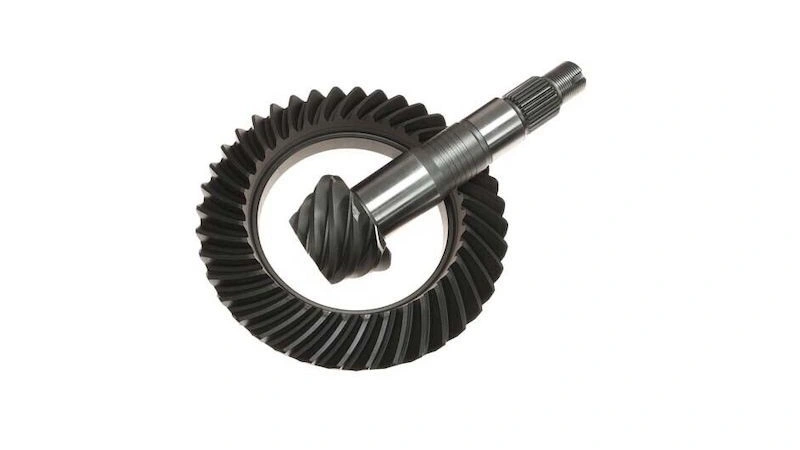
In agricultural machinery, tractors serve as the backbone of many farming operations, requiring robust powertrains to deliver reliable performance in a variety of challenging environments. Central to these powertrains are the ring and pinion gears, which play a key role in transmitting power from the engine to the wheels, allowing the tractor to maneuver efficiently, even under heavy loads.
Understanding how these gears function within a tractor’s system can help farmers optimize their equipment for better efficiency, durability, and performance. In this article, we’ll explore the role of ring and pinion gears in tractors, focusing on their specific contributions to power transfer, efficiency, and overall machine performance.
Power Transfer Efficiency in Tractors
Tractors operate in demanding conditions that require precise control of power from the engine to the wheels. The pinion gear, which is driven by the driveshaft, engages with the ring gear attached to the differential. The differential is responsible for directing the engine power to the wheels, allowing for smooth and efficient movement.
In a tractor, the gear ratio between the ring and pinion gears is crucial in achieving the right balance of speed and torque. This enables the tractor to perform a range of tasks, from pulling heavy implements to navigating rough terrain. Depending on the type of work being performed, tractors use different gear ratios to ensure the right amount of power is applied at the right speed. For example, a lower gear ratio will provide more torque for heavy tasks like plowing, while a higher gear ratio allows for faster speeds on flat ground during lighter tasks.
Enhancing Traction and Stability in Challenging Conditions
Farmers often operate tractors on uneven and variable terrain, which can present traction challenges. Ring and pinion gears play an important role in maintaining traction by ensuring the proper distribution of power between the wheels. As the tractor navigates difficult terrain, the differential’s ability to adjust the rotational speed of the wheels ensures that the tractor stays stable and performs optimally.
For example, in muddy or slippery conditions, ring and pinion gears allow the tractor to apply power efficiently to both wheels, preventing slippage and maintaining forward movement. On steep inclines or rough terrain, these gears enable the tractor to maintain the necessary traction while reducing the risk of engine strain.
Durability Under Heavy Load
Tractors are designed to carry out a variety of heavy-duty tasks, such as plowing, tilling, and hauling. These tasks place significant strain on the powertrain, making gear durability a key concern. Ring and pinion gears, typically made of hardened steel or alloy materials, must withstand substantial force without failure.
One of the main challenges in tractor design is ensuring that the gears can handle the high torque generated during heavy operations. For example, while pulling large implements through tough soil, the gears must transfer power from the engine to the wheels efficiently while enduring the stress of continuous heavy use. The use of high-quality materials and advanced heat treatment processes—such as carburizing—improves the toughness and wear resistance of the gears, extending their lifespan.
Optimizing Gear Ratios for Specific Agricultural Tasks
Different farming operations demand different levels of power and speed. The tractor’s gear ratio—defined by the relationship between the ring and pinion gears—determines how much torque and speed are transmitted to the wheels. By selecting the correct gear ratio, farmers can optimize tractor performance for specific tasks, reducing fuel consumption and improving efficiency.
For instance:
Higher Gear Ratios: Useful in tasks requiring more power, like harrowing or heavy hauling, where torque is essential to overcome the resistance from soil or heavy loads.
Lower Gear Ratios: More suitable for tasks where speed is more important than torque, such as mowing or fertilizing.
Having the ability to customize gear ratios based on task requirements can improve both the tractor’s efficiency and overall fuel economy.
Conclusion
Ring and pinion gears are integral to the efficient operation of tractors, helping to transmit power effectively from the engine to the wheels. Their role in improving traction, maintaining stability, and enhancing durability under heavy loads cannot be overstated. With advancements in gear materials, precision manufacturing, and noise reduction technologies, ring and pinion gears continue to evolve, ensuring that tractors remain a reliable tool for modern agriculture.
By understanding the importance of these gears and following proper maintenance protocols, farmers can ensure that their tractors remain in top condition, capable of handling the toughest agricultural tasks with ease and efficiency.



